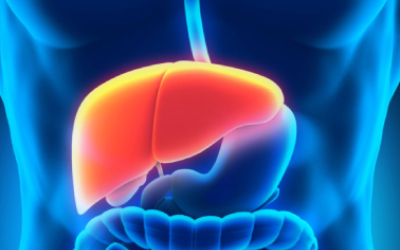
LIVER FUNCTION TESTS
Liver function tests (LFTs) measure various chemicals in the blood made by the liver. An abnormal result indicates a problem with the liver and may help to identify the cause. Further tests may be needed to clarify the cause of the liver problem.
WHAT ARE LIVER FUNCTION TESTS?
As the liver performs its various functions, it makes chemicals that pass into the bloodstream and bile. Various liver disorders alter the blood level of these chemicals. Some of these chemicals can be measured in a blood sample. Some tests that are commonly done on a blood sample are called liver function tests (LFTs). These usually measure the following:
- Alanine transaminase (ALT). This is an enzyme that helps to process proteins. Large amounts of ALT occur in liver cells. When the liver is injured or inflamed (as in hepatitis), the blood level of ALT usually rises.
- Aspartate aminotransferase (AST). This is another enzyme usually found inside liver cells. When a blood test detects high levels of this enzyme in the blood it usually means the liver is injured in some way. However, AST can also be released if the heart or skeletal muscle is damaged.
- Alkaline phosphatase (ALP). This enzyme occurs mainly in liver cells next to bile ducts, and in bone. The blood level is raised in some types of liver and bone disease.
- Albumin. This is the main protein made by the liver, and it circulates in the bloodstream. The ability to make albumin (and other proteins) is affected in some types of liver disorders. A low level of blood albumin occurs in some liver disorders.
- Bilirubin. This chemical gives bile its yellow/green colour. A high level of bilirubin in your blood will make you jaundiced (‘yellow’). Bilirubin is made from haemoglobin. Haemoglobin is a chemical in red blood cells that is released when the red blood cells break down. Liver cells take in bilirubin and attach sugar molecules to it. This is then called ‘conjugated’ bilirubin which is passed into the bile ducts.
- A raised blood level of ‘conjugated’ bilirubin occurs in various liver and bile duct conditions. It is particularly high if the flow of bile is blocked. For example, by a gallstone stuck in the common bile duct, or by a tumour in the pancreas. It can also be raised with hepatitis, liver injury, or long-term alcohol abuse.
- A raised level of ‘unconjugated’ bilirubin occurs when there is excessive breakdown of red blood cells – for example, in haemolytic anaemia. The normal range of liver tests can often vary between different laboratories, so it is not always possible to compare results directly if they have been taken at different places. Also, the normal ranges of values for liver tests also are often different for men and women.
What are liver function tests used for?
- To help diagnose liver disorders if you have symptoms that may be due to liver disease (such as jaundice). The pattern of the blood results may help to say which disorder is causing the problem. For example, depending on which enzyme is highest, it may point to a particular disorder.
- To monitor the activity and severity of liver disorders.
- As a routine precaution after starting certain medicines, to check that they are not causing liver damage as a side-effect
Other tests of the liver
LFT’s are useful and are often the first indication of liver disease, However,Other tests of the liver can also be done to confirm the diagnosis of a particular liver disorder,and/or to monitor a patient’s condition and to provide liver damage treatment to the patient’s other blood tests which may be done include:
- Blood clotting tests. The liver makes many of the proteins needed to make blood clot. In certain liver disorders, the liver cannot make enough of these proteins and so blood does not clot so well. Therefore, blood clotting tests may be used as a marker of the severity of certain liver disorders.
- Gamma-glutamyltransferase (GGT). This is another enzyme that occurs in liver cells. A high level of this enzyme is particularly associated with heavy alcohol drinking
- Immunology. Blood tests may be done to detect
- Viruses and antibodies to viruses. Various viral infections can cause hepatitis for example, hepatitis A virus, hepatitis B virus, etc.
- Auto-antibodies. These are antibodies that attack a part of your own body and occur in autoimmune disorders. The most common autoimmune disorders of the liver are:
- Primary biliary cirrhosis (associated with anti-mitochondrial antibodies).
- Autoimmune hepatitis (associated with smooth muscle antibodies).
- Primary sclerosing cholangitis (associated with antinuclear cytoplasmic antibodies).
- Other types of protein in the blood can point to specific liver diseases – for example:
- Ceruloplasmin is reduced in Wilson’s disease.
- Lack of 1-antitrypsin is an uncommon cause of cirrhosis.
- A high level of ferritin is a marker of haemochromatosis.
Note: Normal LFTs do not always exclude liver disease.
Ultrasonogram
USG abdomen is the most widely used screening/diagnostic investigation which is safe and relatively inexpensive. It can be used to visualize all the internal solid organs of the abdomen. The shape, surface, presence of fat in the liver, stones, and tumors can be diagnosed. The presence of fluid(ascites) can also be diagnosed. It can always be combined with fluid aspiration or biopsies if required.
CT/MRI
Computerized tomography (CT) or Magnetic Resonance Imaging(MRI) are two different types of investigations used to diagnose Liver Pathologies. Thin cross-sectional images of the abdominal organs are obtained by the scanner and they are captured in a computer and reformatted to produce precise information of the internal organs.
